This article was co-authored by Joshua Grahlman, PT, DPT, FAFS. Dr. Joshua Grahlman, PT, DPT, FAFS, is the Founder and Chief Athlete Mechanic of Clutch PT + Performance, a private physical therapy clinic specializing in sports and orthopedics in New York City. With more than a decade of experience, Dr. Grahlman specializes in treating acute and chronic pain and injuries, sports performance optimization and post-operative rehabilitation. Dr. Grahlman earned his Doctorate of Physical Therapy (DPT) from Columbia University College of Physicians and Surgeons. He is one of just a few DPTs in New York City recognized as a Fellow in Applied Functional Science through the Gray Institute for Functional Transformation (GIFT). He is certified in Active Release Technique and Spinal Manipulation and is a TRX Suspension Training Specialist. Dr. Grahlman has spent his career treating athletes of all levels, from Ironman Champions and Olympians to marathoner moms. He consults for Triathlete, Men’s Health, My Fitness Pal and CBS News.
There are 9 references cited in this article, which can be found at the bottom of the page.
This article has been viewed 47,607 times.
Lupus nephritis is a disease that causes the immune system to attack the kidneys, preventing them from functioning properly. One of the major symptoms of lupus nephritis is swelling in the feet, ankles and lower legs due to excess fluid build-up in the body. Start with Step 1 below for detailed instructions on how to decrease swelling in the ankles and feet, along with additional information about the disease in general.
Steps
Treating Swollen Ankles and Feet At Home
-
1Decrease the amount of salt in your diet. If you have been diagnosed with lupus nephritis, it is best to limit your salt intake by avoiding foods with a high salt content. Salt (sodium chloride) attracts water molecules in the blood, as sodium molecules are positively charged and water molecules are negatively charged. As a result, having too much salt in your diet causes your body to retain more fluid, leading to swelling in the feet, ankles and legs.
- Avoid sodium rich foods such as table salt, soy sauce, cured meat and fish, canned goods, junk ?foods, cheese, pickles, instant noodles, salted nuts and seeds, pretzels and fast foods.
- The degree to which you need to restrict your salt intake will differ from one person to another, depending upon the severity of the condition and your doctor’s advice. If you follow the recommended restrictions carefully, it can help to bring down swelling and reduce blood pressure.
-
2Keep your feet elevated to bring down swelling. Keeping your feet and ankles elevated helps to reduce blood flow to this part of the body (due to gravitational force), keeping swelling and inflammation under control.
- At night, try to keep your feet elevated above heart level by placing one or two thick pillows underneath your ankles. Ideally, your legs should be elevated at a 30 degree angle.
- You should also try to keep your legs elevated as much as possible throughout the day, by propping your feet up on cushions or pillows while lying on the couch.
Advertisement -
3Apply epsom salts and glycerine to draw out excess fluid. Applying a mixture of epsom salts (magnesium sulfate) and glycerine to the ankle helps to reduce swelling in the ankles and feet, as the salt draws excess fluid from the body.
- Mix two parts epsom salt to one part glycerine and apply the mixture to the swollen skin around your feet and ankles. Cover the mixture with a bandage and leave in place overnight. Remove the bandage in the morning and repeat the treatment every night until you notice a decrease in swelling.
- Even though it is the epsom salts that draw fluid from the body (as salt attracts water molecules) the glycerine is necessary to soothe the skin, as the salt can cause irritation and skin rashes. Glycerine is also a hygroscopic substance (meaning it has the ability to attract and hold water molecules) which gives the salt more time to take effect.
-
4Exercise frequently to release sweat.[1] It's a good idea to do some light exercise on a regular basis, as exercise causes you to sweat, which depletes stores of water in body.
- When you exercise, your body temperature increases. Your body then releases stored water through the sweat ducts in an attempt to cool you down. With regular sweating, the water stores in your body will become depleted, lessening the swelling in your feet and ankles as a result.
- Some good exercises that will cause you to sweat include walking, jogging, cycling and stair-stepping.
-
5Eat more potassium rich foods to reduce sodium levels. As explained in the steps above, sodium causes your body to retain water, making swelling in the feet and ankles worse. Consuming more potassium-rich foods helps to rid your body of excess sodium and decrease swelling. [2]
- This is due to the fact that your body always tries to maintain a delicate balance between potassium and sodium levels — so when potassium levels are high, sodium levels are low, and vice versa.
- Try to include at least one potassium-rich food in each major meal. Foods rich in potassium include bananas, white beans, spinach, potatoes, apricots, squash, yogurt, salmon, avocados and mushrooms.
-
6Quit smoking, as it can make the condition worse. Smoking constricts the blood vessels, causing high blood pressure. People with high blood pressure are more prone to lupus nephritis and will experience increased swelling in the feet and ankles. Quitting smoking can be difficult, so for some helpful information on where to begin, see this article.
-
7Eat diuretic foods to decrease your body's water storage. A diuretic substance is one that increases the production of urine in the body. Increased urine production allows your body to get rid of any excess water it's storing, reducing swelling in the ankles and feet. The most effective diuretic foods include parsley, dandelion extract, celery seed and watercress.[3]
Receiving Medical Treatment
-
1Take medications to reduce inflammation, suppress the immune system and eradicate excess fluid. A cure for lupus nephritis has not yet been found, but medications (combined with the lifestyle changes outlined in the section above) can keep the condition under control and relieve its associated symptoms, such as swollen ankles and feet. The most commonly prescribed medications to treat lupus nephritis include:
- Corticosteroids: These medications work by blocking chemicals in the immune system that are responsible for causing inflammation. The prescribed dosage of these medications is usually lowered as the condition improves, as they can cause serious side effects. Hydrocortisone is the most commonly used corticosteroid used to treat lupus nephritis, as it reduces the severity of swelling in joints and tendons. It comes in the form of creams, lotions or injections.[4]
- Immunosuppressive drugs: These medications work to suppress the actions of the immune system that cause damage to the kidneys. Examples are Azathioprine, Cyclophosphamide, and Mycophenolate.
- ACE Inhibitors: ACE (angiotensin-converting enzyme) inhibitors help to improve blood flow and trigger the discharge of excess salt and water from the body system. As a result, blood flow will be improved and blood pressure will be controlled.[5]
- Diuretics: Diuretics (also known as water pills) help to eradicate excess water and salt in the body. They work by forcing the kidneys to excrete excess sodium in the urine. This excess sodium draws water from the blood, helping to decrease swelling.[6]
-
2Undergo dialysis to detox the kidneys. In serious cases of lupus nephritis, dialysis is required to remove toxins from the body when the kidney is no longer able to perform this function on its own.
- The patient is taken to a dialysis unit where an I.V catheter is inserted into the kidneys by a specialist nurse or a doctor. This I.V is then connected to the dialysis machine. The I.V carries bad, toxic blood to the machine, then returns purified blood to the kidneys.
- Depending on how severe the kidney damage, dialysis sessions may be required two to three times per week.
-
3Consider the possibility of receiving a kidney transplant. If all other treatment methods fail, it may be necessary to consider a kidney transplant. This procedure replaces the malfunctioning kidney with a healthy kidney from a willing donor.
- Kidneys may be donated by a living related donor (an individuals with blood relation to the patient, such as parents, children or siblings), a living unrelated donor (an individual with no blood relation to the patient, such as spouse or friend) or a deceased donor (an individuals who died recently, but consented to donate a healthy kidney before their death).
- The process for kidney donation is as follows: The donated kidney (or kidneys) is preserved in cool salt water. It is then tested to determine if it matches the recipient’s blood and tissue type. The transplant needs to be completed within 48 hours following the retrieval of the healthy kidney.
- Following the treatment, additional medicines are usually prescribed to ensure that the recipient's immune system does not reject the newly transplanted organ.
Understanding Lupus Nephritis
-
1Understand what lupus nephritis is and why it causes the ankles and feet to swell. Lupus nephritis is a condition in which the immune system attacks the kidneys, causing them to malfunction.
- When the kidneys malfunction they become swollen, and are unable to filter waste from the blood like they are supposed to. This leads to irregularities in the amount of fluid stored within the body. When excess fluid builds up in the body, it can lead to swelling in the ankles, feet and legs.[7]
- Swollen ankles and feet are often the first noticeable symptom of lupus nephritis. The swelling may be absent at the start of the day, but become progressively worse following physical activity.
-
2Learn to recognize the other symptoms of lupus nephritis. Symptoms of lupus nephritis are generally similar to those of other kidney diseases. Aside from swollen ankles and feet, this may include one or more of the following:
- Hematuria: Hematuria is the presence of blood in the urine. Bloody urine is often caused by infections or damage in the kidneys.
- Foamy, frothy urine: Inflammation of the kidneys prevents them from functioning normally, which can lead to leakage or loss of protein through the urine, making it foamy or frothy.
- Excessive urination at night: Kidneys control the production of urine. If your kidneys are damaged they may overproduce urine, leading to increased episodes of urination during the night.
- Weight gain: Increased body weight is caused by salt and water retention in the body, due to malfunctioning kidneys. However, weight gain can also occur after steroid treatments, as a common side effect of steroids is increased appetite.
- High blood pressure: The kidneys require constant pressure for the blood to be filtered. Therefore, the kidneys help to regulate blood pressure by producing a protein called angiotensin. If the kidney is damaged, however, it cannot regulate the blood pressure anymore and blood pressure increases. [8]
-
3Understand how lupus nephritis is diagnosed. Although a combination of swollen ankles and feet and any of the symptoms described above is a good indication of lupus nephritis, it will be necessary to undergo rigorous testing to confirm the diagnoses.
- Blood Tests: Waste products such as creatinine and urea are normally excreted out of the body through the kidneys. If levels of these waste products are elevated in blood test result, it strongly suggests the presence of lupus nephritis. A blood sample will be drawn out of the vein and placed in a sterile container for examination.
- 24-Hour Urine Collection: For this test, a urine specimen is collected and tested for levels of protein. The procedure is repeated over a 24-hour period to gauge the ability of the kidneys to filter waste products. The urine is also tested for abnormal levels of red blood cells, white blood cells and proteins.
- Iothalamate Clearance Testing: This procedure involves having a radioactive contrast dye (Iothalamate) injected into the blood to measure how quickly the kidneys can filter the substance and excrete it out of the body.
- Kidney Biopsy: A kidney biopsy will be necessary to accurately establish the progress of the disease. During the procedure, a long needle is inserted through the stomach and into the kidneys in order to extract a sample of the tissue. The sample is then sent to the laboratory for testing.
- Ultrasound: An ultrasound is performed to determine the size and shape of the kidneys and to check for the presence of any abnormalities or signs of damage.
-
4Familiarize yourself with the stages of lupus nephritis. Lupus nephritis can classified into five different stages, according to a system developed by the World Health Organization. Your doctor may diagnose you with a specific stage of lupus nephritis after a careful and in-depth analysis of your condition.
- Stage 1:' No indication of lupus nephritis
- Stage 2: Mildest form of the condition, can be treated with corticosteroids
- Stage 3: Earliest stage of advanced lupus, higher dosages of corticosteroids are required in treatment.
- Stage 4: Advanced stage of lupus, higher dosages of corticosteroids are combined with other immune suppression drugs. Patient may be vulnerable to kidney failure.
- Stage 5: Excessive protein loss and swelling, higher amounts of corticosteroids are prescribed with or without the mixture of immune-suppressing drugs.
Expert Q&A
Did you know you can get expert answers for this article?
Unlock expert answers by supporting wikiHow
-
QuestionHow do you get rid of inflammation in your feet?
 Joshua Grahlman, PT, DPT, FAFSDr. Joshua Grahlman, PT, DPT, FAFS, is the Founder and Chief Athlete Mechanic of Clutch PT + Performance, a private physical therapy clinic specializing in sports and orthopedics in New York City. With more than a decade of experience, Dr. Grahlman specializes in treating acute and chronic pain and injuries, sports performance optimization and post-operative rehabilitation. Dr. Grahlman earned his Doctorate of Physical Therapy (DPT) from Columbia University College of Physicians and Surgeons. He is one of just a few DPTs in New York City recognized as a Fellow in Applied Functional Science through the Gray Institute for Functional Transformation (GIFT). He is certified in Active Release Technique and Spinal Manipulation and is a TRX Suspension Training Specialist. Dr. Grahlman has spent his career treating athletes of all levels, from Ironman Champions and Olympians to marathoner moms. He consults for Triathlete, Men’s Health, My Fitness Pal and CBS News.
Joshua Grahlman, PT, DPT, FAFSDr. Joshua Grahlman, PT, DPT, FAFS, is the Founder and Chief Athlete Mechanic of Clutch PT + Performance, a private physical therapy clinic specializing in sports and orthopedics in New York City. With more than a decade of experience, Dr. Grahlman specializes in treating acute and chronic pain and injuries, sports performance optimization and post-operative rehabilitation. Dr. Grahlman earned his Doctorate of Physical Therapy (DPT) from Columbia University College of Physicians and Surgeons. He is one of just a few DPTs in New York City recognized as a Fellow in Applied Functional Science through the Gray Institute for Functional Transformation (GIFT). He is certified in Active Release Technique and Spinal Manipulation and is a TRX Suspension Training Specialist. Dr. Grahlman has spent his career treating athletes of all levels, from Ironman Champions and Olympians to marathoner moms. He consults for Triathlete, Men’s Health, My Fitness Pal and CBS News.
Physical Therapist & Entrepreneur
References
- ↑ Joshua Grahlman, PT, DPT, FAFS. Physical Therapist & Entrepreneur. Expert Interview. 8 September 2020.
- ↑ http://www.thedoctorwillseeyounow.com/content/nutrition/art2235.html
- ↑ http://www.huffingtonpost.com/2013/05/31/worst-dehydrating-foods_n_3354216.html
- ↑ http://www.nhs.uk/Conditions/Corticosteroid-(drugs)/Pages/How-it-works.aspx
- ↑ http://www.webmd.com/heart-disease/heart-failure/angiotensin-converting-enzyme-ace-inhibitors
- ↑ http://www.mayoclinic.org/diseases-conditions/high-blood-pressure/in-depth/diuretics/art-20048129?footprints=mine
- ↑ http://www.healthline.com/health/lupus-nephritis#Diagnosis 3
- ↑ http://www.webmd.com/lupus/lupus-nephritis
- ↑ http://www.webmd.com/women/guide/understanding-osteoporosis-basics
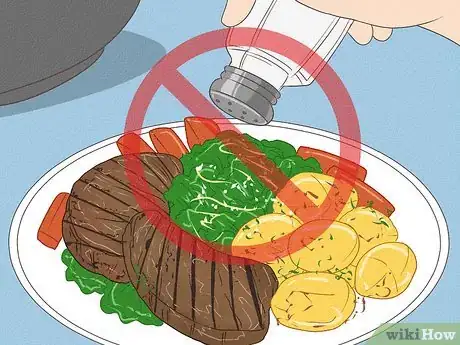
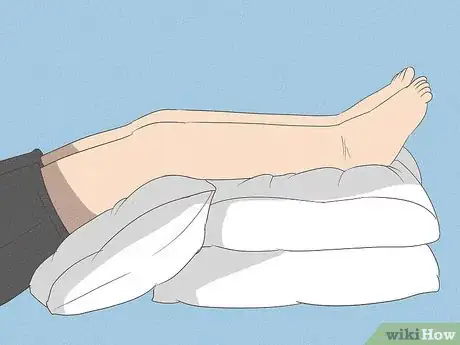
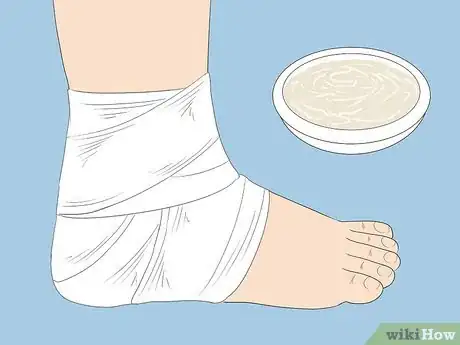
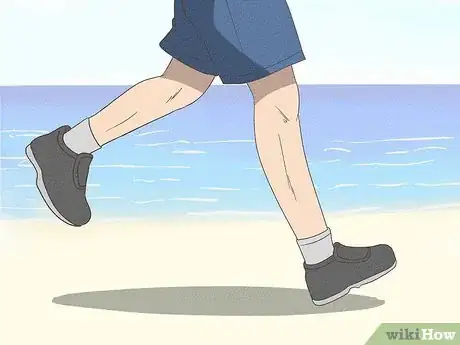




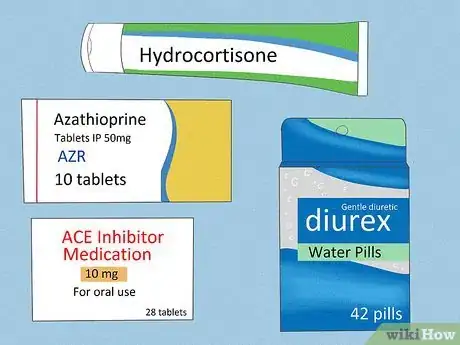
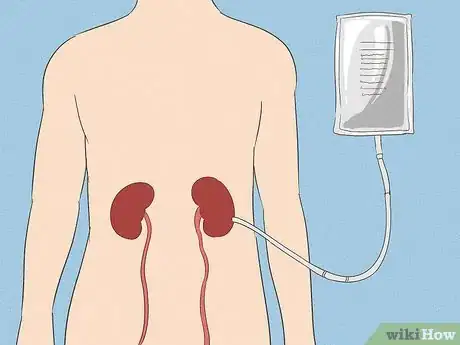
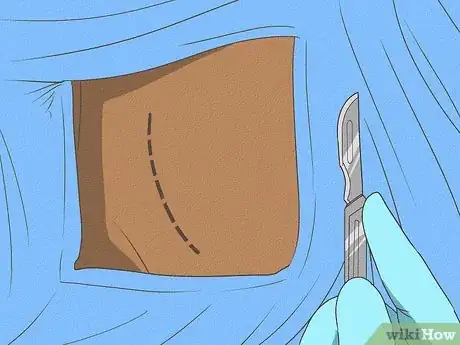
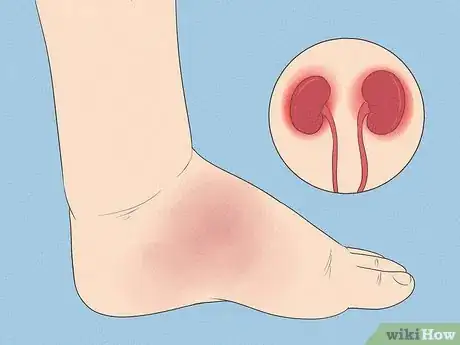
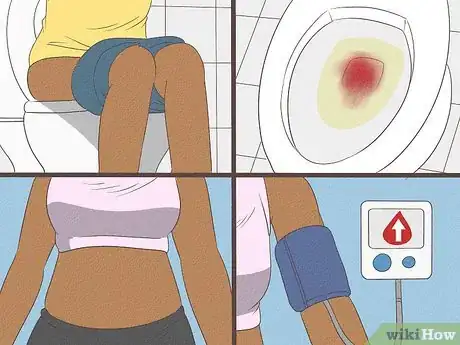
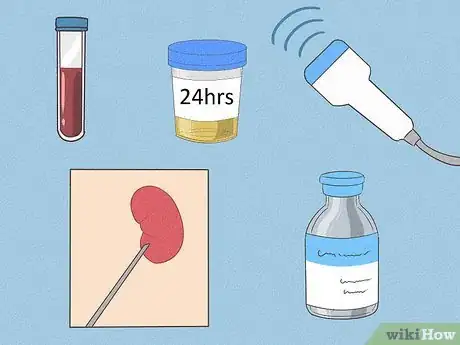


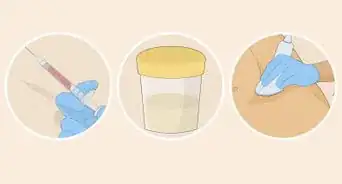



-Step-14.webp)
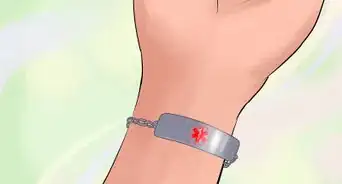







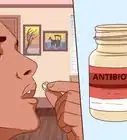
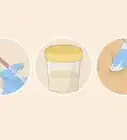





































Medical Disclaimer
The content of this article is not intended to be a substitute for professional medical advice, examination, diagnosis, or treatment. You should always contact your doctor or other qualified healthcare professional before starting, changing, or stopping any kind of health treatment.
Read More...